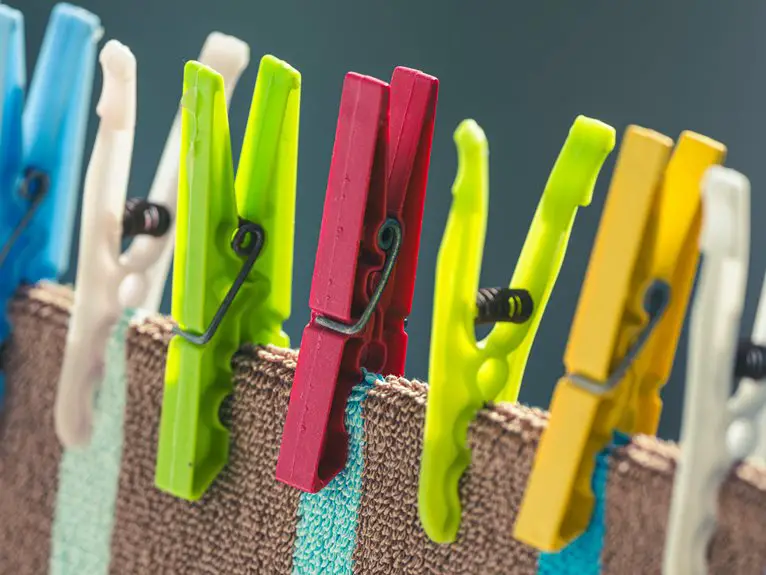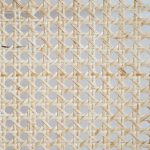When choosing nonwoven geotextile fabric for driveways and drains, you’ll want to evaluate permeability, strength, and thickness. Driveways need durable fabric to support heavy loads and prevent soil movement, while drains require high permeability to allow water flow without clogging. Proper installation—like overlapping edges and securing fabric—also matters for both. Though upfront costs may be higher, you’ll save on long-term maintenance and repairs. Keep exploring to discover installation tips and cost benefits.
Table of Contents
Key Takeaways
- Nonwoven geotextile fabric offers superior soil stabilization and filtration for both driveways and drainage systems.
- High permeability in nonwoven fabric ensures efficient water flow and prevents soil erosion in drainage applications.
- Tensile strength and durability of the fabric are crucial for withstanding heavy loads on driveways.
- Proper installation involves overlapping fabric sheets and securing edges to prevent shifting in both uses.
- Long-term cost savings arise from reduced maintenance and extended lifespan in both driveway and drainage projects.
Understanding Nonwoven Geotextile Fabric
Nonwoven geotextile fabric plays an essential role in many construction and landscaping projects. When you use this fabric, you benefit from its unique manufacturing process, which involves bonding fibers together rather than weaving them.
This process gives the fabric a soft, yet durable texture, making it ideal for soil stabilization and filtration tasks. You’ll find it especially useful in preventing soil erosion and allowing water to pass through while keeping soil particles in place.
Since it’s flexible, you can easily conform it to various surfaces, whether you’re working on uneven terrain or complex drainage systems. Understanding these basics helps you choose the right fabric for your needs, ensuring your project achieves long-lasting stability and functionality.
Key Properties Affecting Performance
You’ll want to focus on permeability and drainage efficiency since they control water flow through the fabric.
Tensile strength and durability matter because they determine how well the fabric holds up under stress.
Don’t forget UV resistance and longevity, which affect how the material performs over time in outdoor conditions.
Permeability and Drainage Efficiency
Although many factors influence geotextile performance, permeability and drainage efficiency play essential roles in ensuring effective water flow and soil stability.
When you choose a nonwoven geotextile fabric with high permeability, water can pass through easily, preventing water buildup and reducing hydrostatic pressure. This helps maintain soil structure and prevents erosion or pooling.
Efficient drainage means the fabric allows water to flow away from your driveway or drain area, keeping surfaces dry and stable. If the fabric clogs or restricts flow, water could accumulate, leading to damage or soil displacement.
Tensile Strength and Durability
Water flow and soil stability depend not only on permeability and drainage but also on how well the fabric holds up under stress.
When choosing nonwoven geotextile fabric for driveways and drains, you need material with strong tensile strength to resist tearing during installation and long-term use. Durable fabrics maintain their integrity despite heavy loads, soil movement, and environmental pressures, ensuring consistent performance.
If the fabric tears or deforms easily, soil can infiltrate, causing clogging or structural failure. Look for fabrics tested for high tensile strength and elongation, as these indicate resilience and flexibility.
UV Resistance and Longevity
Because nonwoven geotextile fabrics often face prolonged exposure to sunlight, their resistance to UV rays plays a crucial role in determining their longevity.
If you want your driveway or drainage project to last, choosing a fabric with strong UV resistance is essential.
UV degradation can weaken the fibers, causing premature failure.
When evaluating UV resistance, consider these factors:
- Fabric composition and additives that block or absorb UV radiation
- Manufacturer’s UV stability ratings or exposure test results
- Expected duration of sunlight exposure during installation and use
- Protective measures, like covering the fabric with soil or gravel
Weight and Thickness Considerations
Anyone selecting nonwoven geotextile fabric should pay close attention to weight and thickness, as these factors directly impact performance and durability.
Heavier fabrics typically offer greater strength and resistance to tearing, making them ideal for driveways where load-bearing is essential. Thicker materials also provide enhanced cushioning and protection against soil movement or erosion.
However, you don’t always need the heaviest option; for drainage applications, a lighter fabric may suffice if stability and filtration are maintained.
Keep in mind that thickness influences how well the fabric resists punctures during installation. Balancing weight and thickness according to your project’s demands guarantees you get durable, long-lasting results without overspending on unnecessary material strength or bulk.
Always match fabric specifications to your specific site conditions for peak performance.
Permeability and Drainage Efficiency
How well your nonwoven geotextile fabric allows fluids to pass through plays an essential role in its effectiveness.
When choosing fabric for driveways and drains, you want it to manage water efficiently without clogging or pooling. Here’s what to take into account:
- High permeability guarantees water moves through quickly, preventing saturation.
- Drainage efficiency helps maintain soil stability beneath your surface.
- Non-clogging fibers keep pores open, even with fine sediments.
- Consistent flow rates avoid water buildup and erosion issues.
Tensile Strength and Durability
While permeability guarantees water moves through your geotextile fabric efficiently, its ability to withstand tension and wear determines how long it performs under pressure.
You need a fabric with high tensile strength to resist stretching or tearing when subjected to heavy loads, especially under driveways where vehicles exert constant force.
Durability also matters—your fabric should resist degradation from UV exposure, chemicals, and soil conditions.
Durability is key—choose fabrics that withstand UV, chemicals, and harsh soil environments for lasting performance.
Nonwoven fabrics typically offer excellent durability due to their fiber bonding methods, which enhance resistance to punctures and abrasion.
Choosing a geotextile with the right tensile strength guarantees it maintains structural integrity over time, preventing costly repairs.
Always check manufacturer specifications for tensile ratings and durability tests to match your project’s demands precisely.
Installation Techniques for Driveways
Because proper installation guarantees your geotextile fabric performs as intended, you need to follow specific techniques when laying it under driveways.
Start by clearing the area of debris and leveling the ground to create a stable base. Roll out the fabric smoothly, avoiding wrinkles or folds that could compromise its function.
Overlap adjacent sheets by at least 12 inches to guarantee continuous coverage and strength. Finally, secure the fabric with stakes or pins to prevent shifting during gravel or paving installation.
- Clear and level the base thoroughly
- Roll out fabric flat without wrinkles
- Overlap seams by a minimum of 12 inches
- Anchor fabric securely with stakes or pins
Following these steps guarantees your driveway remains stable and well-drained.
Installation Techniques for Drainage Systems
A successful drainage system relies on correctly installing geotextile fabric to prevent soil from clogging the pipes and maintain water flow.
First, you’ll want to clear the trench of debris and level the base. Lay the nonwoven geotextile fabric along the trench, guaranteeing it extends beyond the pipe area to wrap around the gravel layer later.
Place the perforated drainage pipe on top of the fabric, then cover it with clean gravel.
Finally, fold the fabric over the gravel to fully encapsulate the pipe and gravel layer. This wrapping keeps fine particles out while allowing water to pass.
Secure the fabric edges to avoid shifting during backfilling. Proper installation like this guarantees your drainage system functions efficiently and lasts longer.
Cost Analysis and Long-Term Benefits
Proper installation sets the foundation, but understanding the cost and long-term benefits of nonwoven geotextile fabric helps you make smart investment decisions.
Proper installation is key, but knowing the cost and benefits of nonwoven geotextile fabric guides smart investments.
While the upfront cost may seem higher than traditional materials, the durability and performance often save you money over time.
Here’s what you gain:
- Reduced maintenance expenses thanks to improved soil stabilization
- Extended lifespan of driveways and drainage systems
- Prevention of costly repairs from erosion or clogging
- Enhanced overall project efficiency, reducing labor and material waste
Frequently Asked Questions
Can Nonwoven Geotextile Fabrics Be Recycled or Reused?
You can recycle or reuse nonwoven geotextile fabrics, but it depends on their condition and local recycling facilities. Usually, you’ll need to clean them first, and reusing them in landscaping or erosion control works well.
Are There Environmental Impacts of Manufacturing Nonwoven Geotextiles?
You should know manufacturing nonwoven geotextiles emits about 2.5 kg CO2 per kg produced. While they help soil and water management, their production still impacts the environment through energy use and raw material extraction.
How Do Nonwoven Geotextiles Perform in Extreme Weather Conditions?
You’ll find nonwoven geotextiles perform well in extreme weather, resisting UV rays, moisture, and temperature fluctuations. They maintain strength and drainage capabilities, ensuring durability and protection even under harsh environmental conditions.
What Are Common Brands or Manufacturers of Nonwoven Geotextiles?
You’ll find high-quality nonwoven geotextiles from giants like TenCate, Propex, and Fibertex—they practically make fabric superheroes! These brands deliver durability and performance you can trust for any tough project you tackle.
Can Nonwoven Geotextile Fabric Be Used for Landscaping Besides Driveways and Drains?
Yes, you can definitely use nonwoven geotextile fabric for landscaping. It helps control weeds, improve soil drainage, and stabilize soil, making your garden beds and pathways more durable and easier to maintain.
- The Use of Nonwovens in Construction and Civil Engineering - July 11, 2025
- The Use of Nonwovens in Construction and Civil Engineering - July 11, 2025
- The Use of Nonwovens in Construction and Civil Engineering - July 11, 2025







